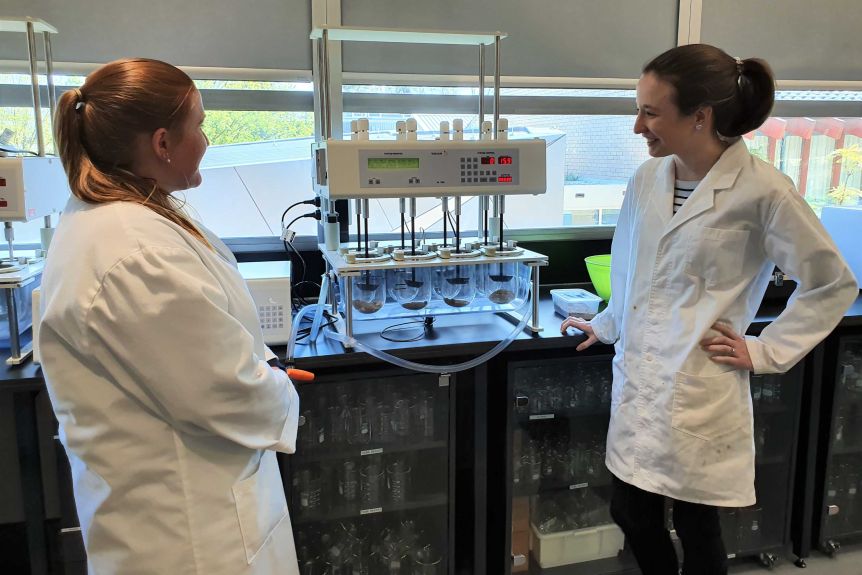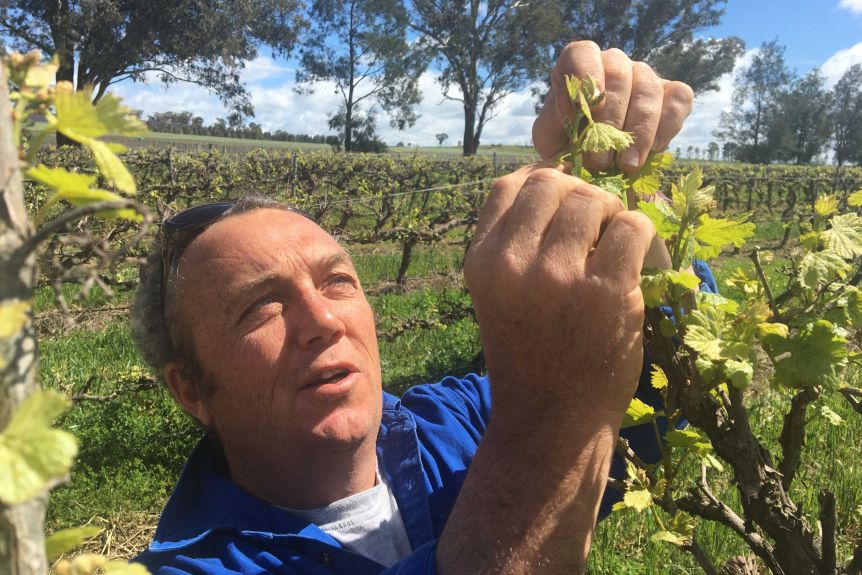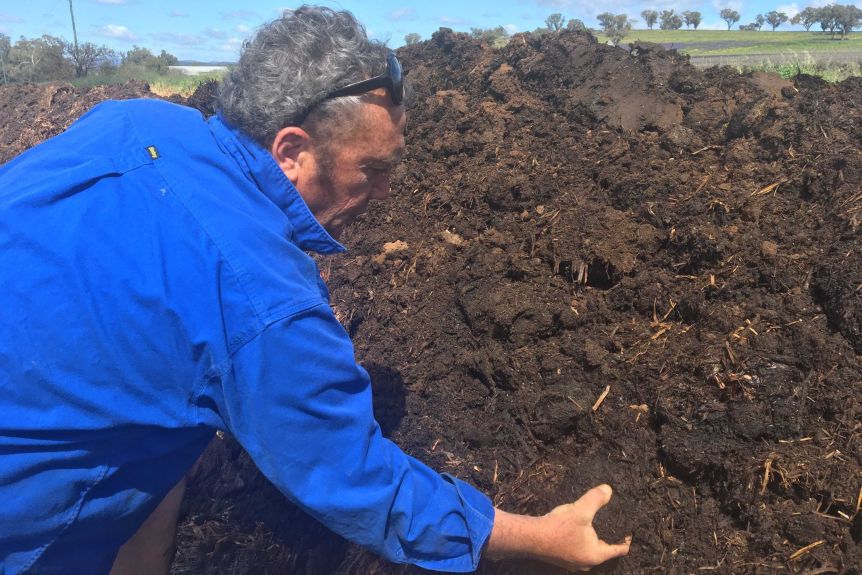In the ongoing battle to reduce food waste, a group of students has discovered how the oil from mango seeds could be used as a moisturiser.
It was one of many ideas being explored to find ways of reusing leftovers or produce that would otherwise be thrown out.
At Charles Sturt University (CSU), in Orange NSW, students in the pharmaceutical department took it upon themselves to find a way of extracting oil from the kernels inside mangoes.
Associate Professor Maree Donna Simpson said every year in Australia more than 70,000 tonnes of mangoes were produced, most of which was consumed on the domestic market.
Key points:
- The Federal Government wants to halve food waste by 2030
- An estimated 7.6 million tonnes of food is wasted in Australia each year
- One idea is oil extracted from mango kernels used in moisturiser to cut down on waste
“What we wanted to do is to crack into the seed, and take the oil from the kernel inside and see what we could do with it.
“We found that the oil inside has similar characteristics to shea butter and cocoa butter, which are used often but not usually sourced in waste products like mango seeds.”

Halving food waste by 2030
In 2017, the Federal Government committed to halve the level of food waste in Australia by the year 2030.
Food Innovation Australia Limited (FIAL), a not-for-profit organisation, commenced a study this year looking at whether the commitment was achievable and what actions would be needed to reach the target.
“Nationally, there are about 7.6 million tonnes of food that is wasted every year,” FIAL special advisor Mark Barthel said.
“It’s made up of waste from the primary and manufacturing sectors, as well as food that gets thrown out in retail, hospitality and food service, and at home.”
Mr Barthel said there was a growing interest in transforming surplus food to ensure it was not wasted.
“Even something as simple as dehydrating fresh produce that would otherwise be thrown out or given to livestock would be a huge market opportunity,” he said.
Cracking into mango seeds
At CSU, the pharmacy students were required to remove the kernel from inside the mango seed to begin the process of extracting oil.
Student Emily Guo said they looked at a variety of solvents that could be used to remove the oil.
“We did a couple of experiments with different solvents at different temperatures,” she said.
“We then looked at the final product and discovered that, compared to commercial mango oil, ours had really high carbon, which showed it was really pure.


Not wasting a thing
Farmers and producers are also encouraged to find new ways to use crops or vegetables that would otherwise go to waste.
While a quarter of food waste occurs in the primary sector, there has been a move in recent years towards organic and regenerative farming practices.
Canowindra winemaker Jason O’Dea decided to develop a strategy of using everything he could on his vineyard in Central West NSW.
“Part of our business has been organic winemaking, which means preservative-free wine, and identifying ways we can have zero waste on our property,” he said.
“We make our own fertiliser compost using by-products from around the winery like grapes or grape skin, which would normally be thrown out.
“It’s also made up of local cow and chook poo, hay, and olive paste from the next-door factory. It’s about using whatever we can.”

Mr O’Dea said the 300-tonne pile of compost was heated to a temperature of 80 degrees Celsius on three occasions to allow the microbes to work.
“Those microbes eat the carbon to convert the manure into something we can spread around the vines,” he said.
“When it gets spread it releases nutrients as part of the organic practice of keeping your dirt in good shape.
“We believe that better soil health provides better conditions for the vines to grow in, and is resulting in better wine quality than what we’d see with conventional growing practices.”


